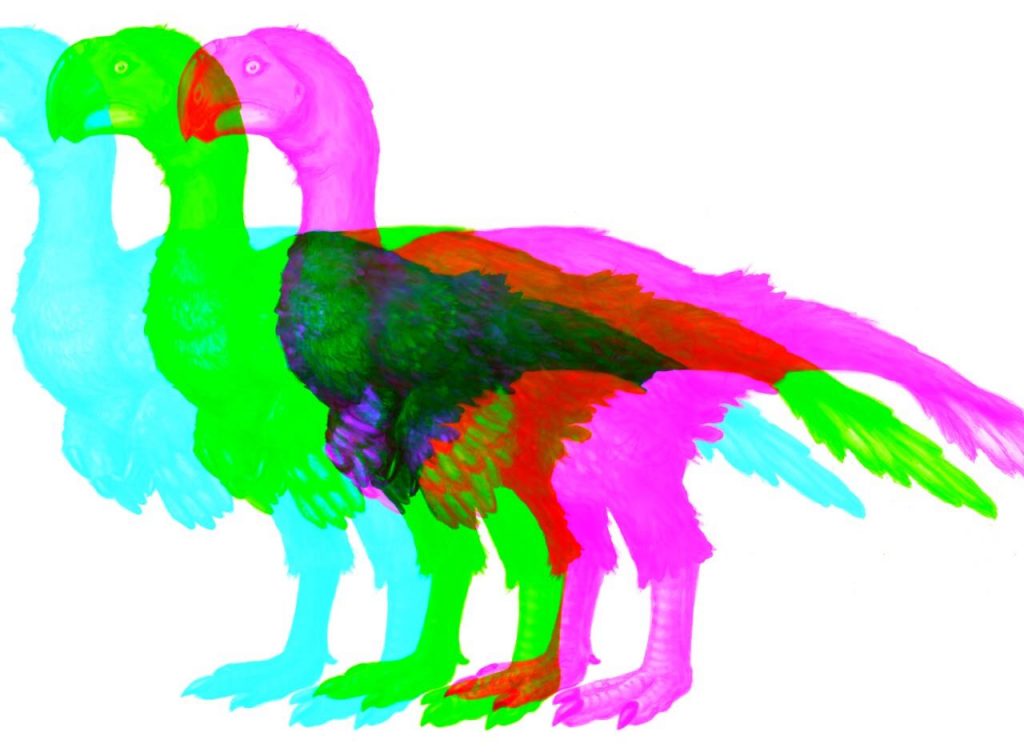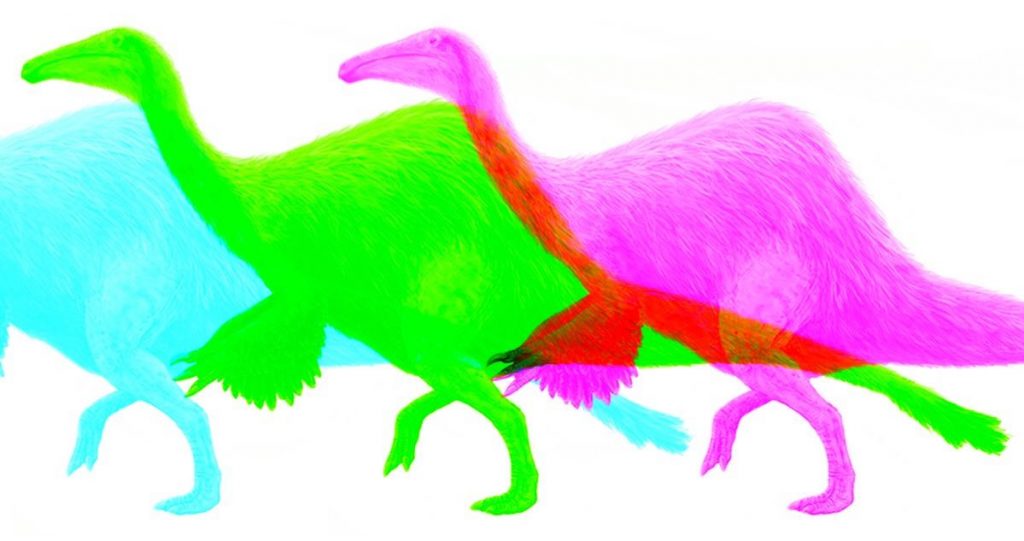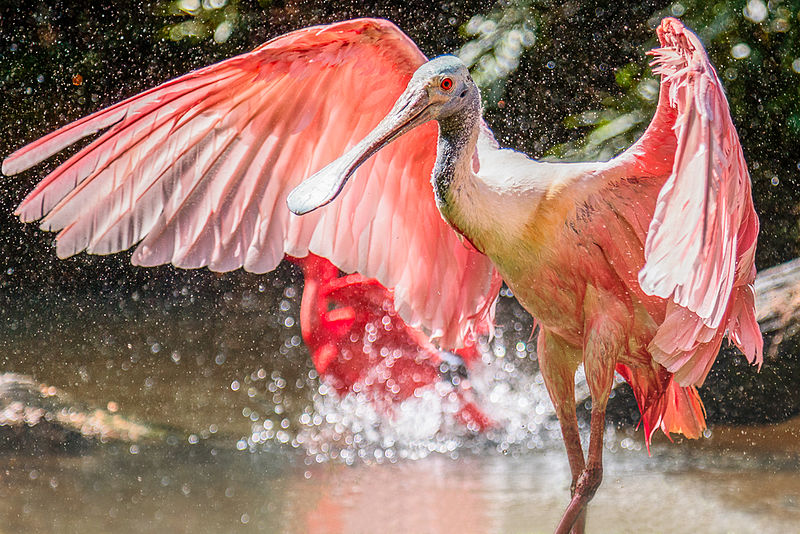WERE ANY DINOSAURS PINK?

Dinosaurs lived and evolved across millions of years. Thanks to recent discoveries and advances in technology, it is now possible to at least guess at the colours of some dinosaurs. Here, we ask whether any were pink.
Dinosaurs roamed, ran, crawled, and thundered across the planet from around 230 million years ago (MYA) to 65 MYA. During their 165 million year reign, they experimented with a wide variety of body plans.
From the bipedal sparrow-sized raptor, Dromaeosauriformipes rarus to the quadrupedal behemoth, Patagotitan mayorum, clocking in at 122 feet (37 meters) long.
It is now reasonably well established that at least some dinosaurs sported feathers. Although it was hotly debated for years, recent discoveries in Laoning, China have all but cemented the theory.
Few people now challenge the idea that some dinosaurs were covered in proto-feathers, lovingly referred to as dino fuzz.
But what colour were these feathers? It seems fanciful to imagine that anyone could identify the hue of a feather that was last touched by the breeze more than 65 MYA, but science is finding a way.
A group of researchers looking at dinosaurs from Laoning identified fossilised melanosomes — melanin-producing organelles that give skin and feathers colour.
From the type of melanosomes — those that produce eumelanin and those that produce phaeomelanin — and the way that they are stacked, the researchers can make some inferences about the colour of the dinosaur’s feathers.
For instance, researchers have concluded that Sinosauropteryx, a small theropod with a long tail and short arms, might have had orange feathers, and a chestnut and reddish-brown striped tail.
However, melanin is only responsible for blacks, browns, yellows, and reddy-browns, so it cannot give us the whole colourful story.
This is a relatively new science and, of course, reading the colour of a dinosaur using ancient organelles cannot be verified or checked. Some scientists are not convinced that it can be entirely accurate.
Although this new science is fascinating and intriguing, it does not answer our original question — were any dinosaurs pink?
The pinkness of birds

Paleontologists often look to the modern natural world to pick up clues about how they might have looked and behaved. As the only surviving dinosaurs, birds are a good place to start.
When considering pink birds, the flamingo is likely to be front of mind. However, flamingoes are not born pink, but grey; their colouration is thanks to beta carotene and other carotenes in their diet.
The carotenes come from algae and crustaceans. Could any dinosaurs have used these creatures as a food source? I think it is highly possible. However, the picture gets a little more complicated because levels of carotene in crustaceans vary depending on the climate.
This is why flamingoes in the Caribbean tend to be red and orange, whereas those in Kenya are pale pink.
Also, terrestrial filter feeders like ducks and flamingoes are relatively rare. With that said, the remains of such feeders have been found, like Gallimimus, a 5-meter long duck-like dinosaur — the largest land-based filter feeder described to date.
Was Gallimimus pink? I hope so.
Other pink birds

The flamingo is not the only pink bird. One of the most dramatic pink birds you are likely to come across is the roseate spoonbill. Like the flamingo, the roseate spoonbill derives its pinkness from carotenes, like canthaxanthin, in its diet.
The Australian galah and pink robin also have a pleasing pink hue. The pink pigeon of Mauritius, the pink-headed fruit dove from Indonesia, the fruit dove from Oceania and Southeast Asia, and Africa’s southern carmine bee-eater all carry a touch of pink on their person.
All of the above (and many more) produce pink pigment from the carotene in their diet without filter feeding or consuming crustaceans. Or, in some cases, the pink is due to a class of pigments called porphyrins, which are modified amino acids. Oddly, porphyrins are structurally similar to haemoglobin.
How birds derive their color is a complex process; some colours come from pigments that the birds create, some are due to light refraction, some are due to ingredients in their diet, and others are produced by an interaction between all of the above.
For instance, carotenoids can interact with melanins to produce olive green.
Although it cannot be taken as solid evidence that some dinosaurs were pink, we can at least conclude that it is possible.
The thought that even a single species of dinosaur sported pink plumage is rather wonderful.
MORE:
ELASMOTHERIUM: THE REAL UNICORN

















